How to Fix Laptop Turns Off When Unplugged?
When a laptop turns off immediately after unplugging it from the power source, it usually indicates a more serious problem beyond just a low battery. This often suggests an issue with the battery itself or its connection to the laptop’s power system. The most common cause is a faulty or worn-out battery that can no longer hold a charge or provide enough power.

Other possible causes include malfunctions in the motherboard’s charging circuit or outdated power management drivers.
In this article we will discuss different fixes to this problem.
1. Change Power Management Settings
Incorrect power settings, like having the critical battery level set too high or the wrong actions for low battery, can make the laptop shut down right away when unplugged. By changing these settings—such as setting the “critical battery action” to hibernate instead of shut down or adjusting the processor power settings—you can help the system manage battery power better.
- Go to the Start Menu, type in Power Plan, and click ‘Edit Power Plan’.
- Click ‘Change advanced power settings’.
- Scroll down and locate ‘Processor power management’, then click to expand it.
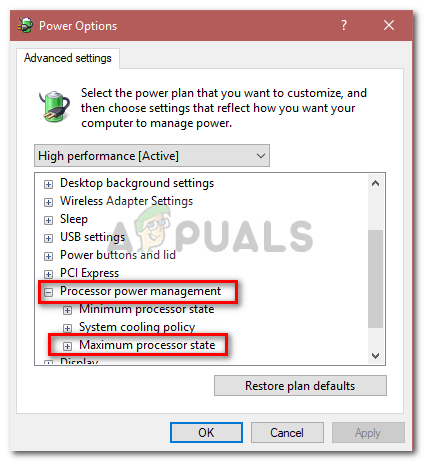
Processor power management – Windows Power Options - Expand the Maximum processor state and reduce the On-battery option to 20%.
- Expand Display and click on Enable adaptive brightness.
- Turn on adaptive brightness for both on-battery and plugged-in options.
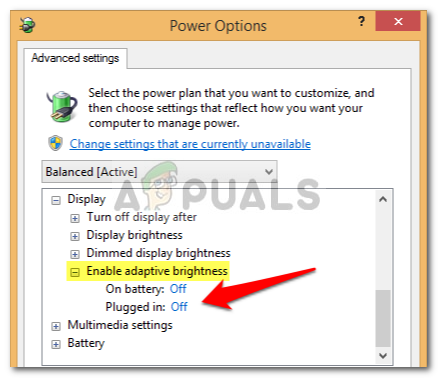
Enabling Adaptive Brightness from Windows Power Options
2. Reinstall Battery Drivers
The problem might be caused by faulty drivers that stop your laptop from reading the battery charge correctly, leading to sudden shutdowns when unplugged. Reinstalling the drivers can fix this, allowing your laptop to read power levels correctly and run well on battery.
- Go to the Start Menu, type in Device Manager, and open it.
- Expand Batteries, then right-click each ACPI option one by one.
- Select Uninstall.
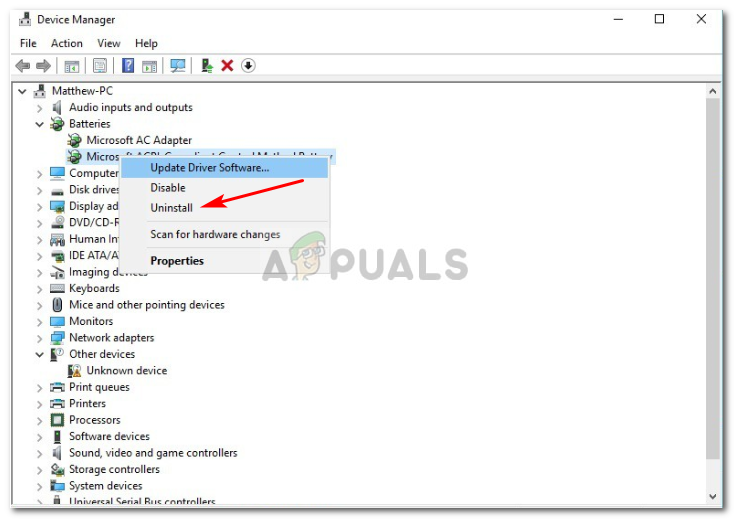
Battery Driver Uninstall – Device Manager - Once you’ve uninstalled the drivers, reboot your laptop.
After rebooting, your battery drivers will be installed automatically.
3. Run Power Troubleshooter
Running the Power Troubleshooter is an easy way to fix software issues that make a laptop shut down when unplugged. This tool looks for wrong power settings, driver issues, and other power problems, then tries to fix them automatically.
- Press Windows + I to open Settings.
- Go to Update and Security.
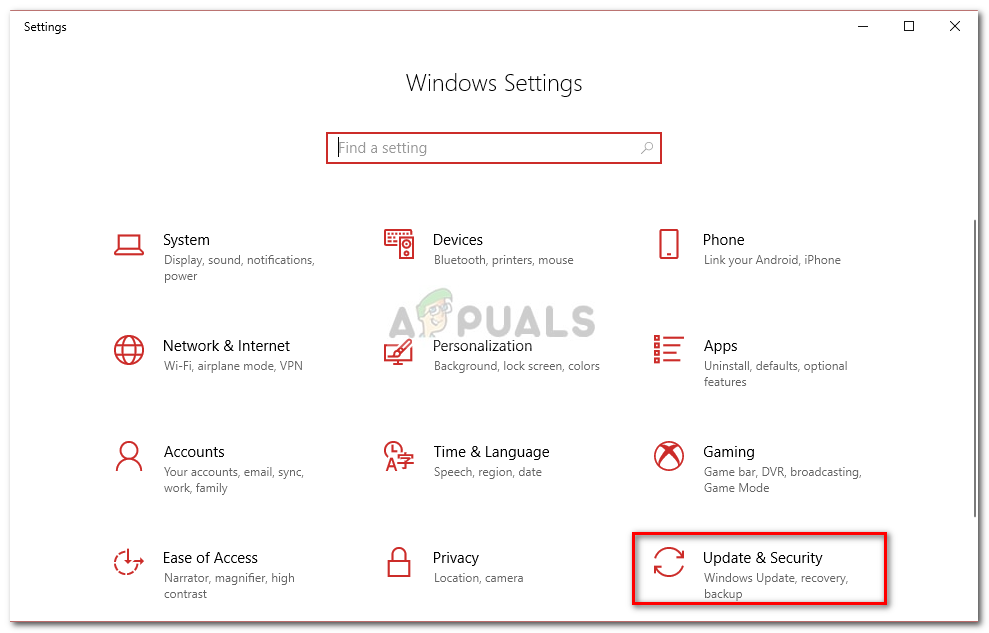
Windows Settings - Navigate to the Troubleshoot tab.
- Under Find and fix other problems, find Power.
- Click it and then hit Run troubleshooter.
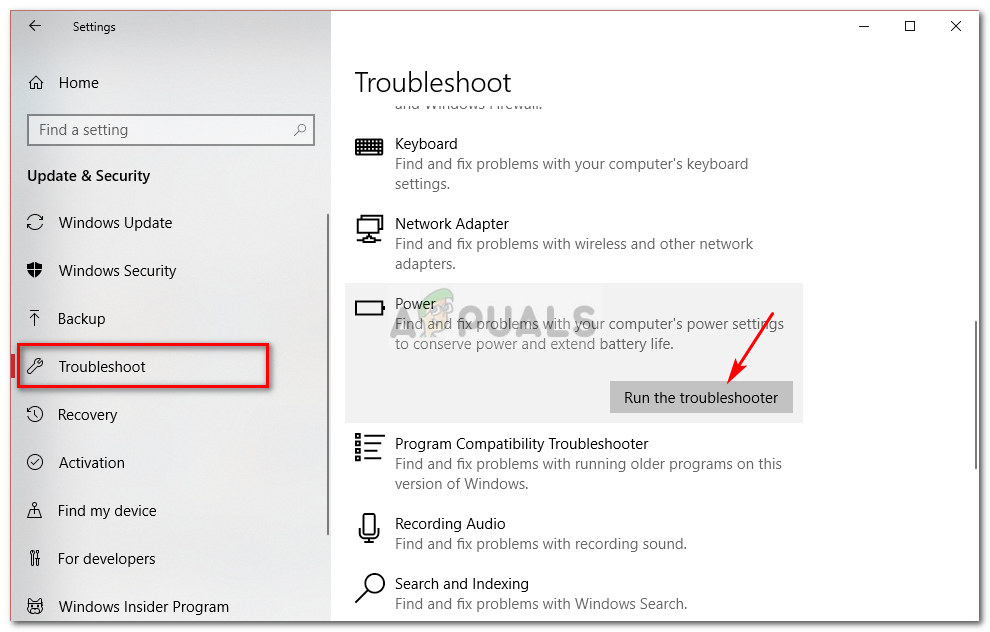
Running Power Troubleshooter to Detect Power Settings Flaws
4. Power Reset Your Laptop
A power reset removes leftover electricity in your laptop, which can help fix power or charging problems.
- Shut down Windows, or if there is power, hold the power button until there’s no power.
- Unplug any external peripherals connected to your laptop.
- Unplug the power cord and remove the battery from the battery compartment.
- Hold the power button for about 15 seconds.
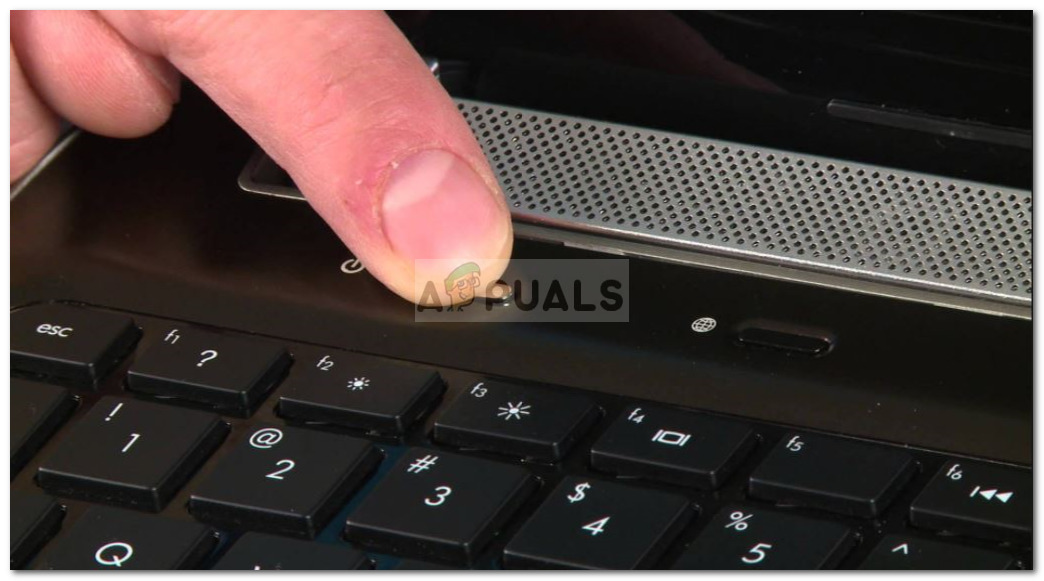
Power Reset - Notice the power light blink briefly.
- Reconnect the power cord and turn on your system.
5. Disconnect the Battery
This process clears leftover energy in the capacitors or circuits, which might be messing up the battery. It lets the hardware reset and adjust itself when reconnected.
- Shut down your laptop and unplug the power cord.
- Use a screwdriver to remove screws and access the battery.
- Locate the battery and disconnect it carefully.
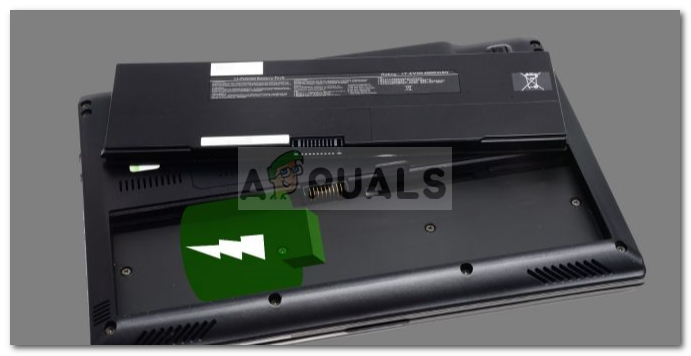
Removed Battery - Wait for about 15 minutes.
- Reconnect the battery and replace the screws.
- Plug in the power cord and turn on your system.
6. Update BIOS
If your chipset or BIOS isn’t updated, your laptop might have trouble managing parts like the battery. The BIOS helps hardware and software work together. An old BIOS might misread the battery or poorly manage power, causing shutdowns when unplugged. Updating the BIOS ensures your laptop correctly understands and handles the battery, which can fix these issues.
Here are guides to different BIOS update, HP Bios Update, Dell Bios Update.
7. Change the Battery
If the fixes don’t work, your laptop might need a new battery. Be sure to buy an original battery from your laptop’s maker to ensure it fits and works well.




